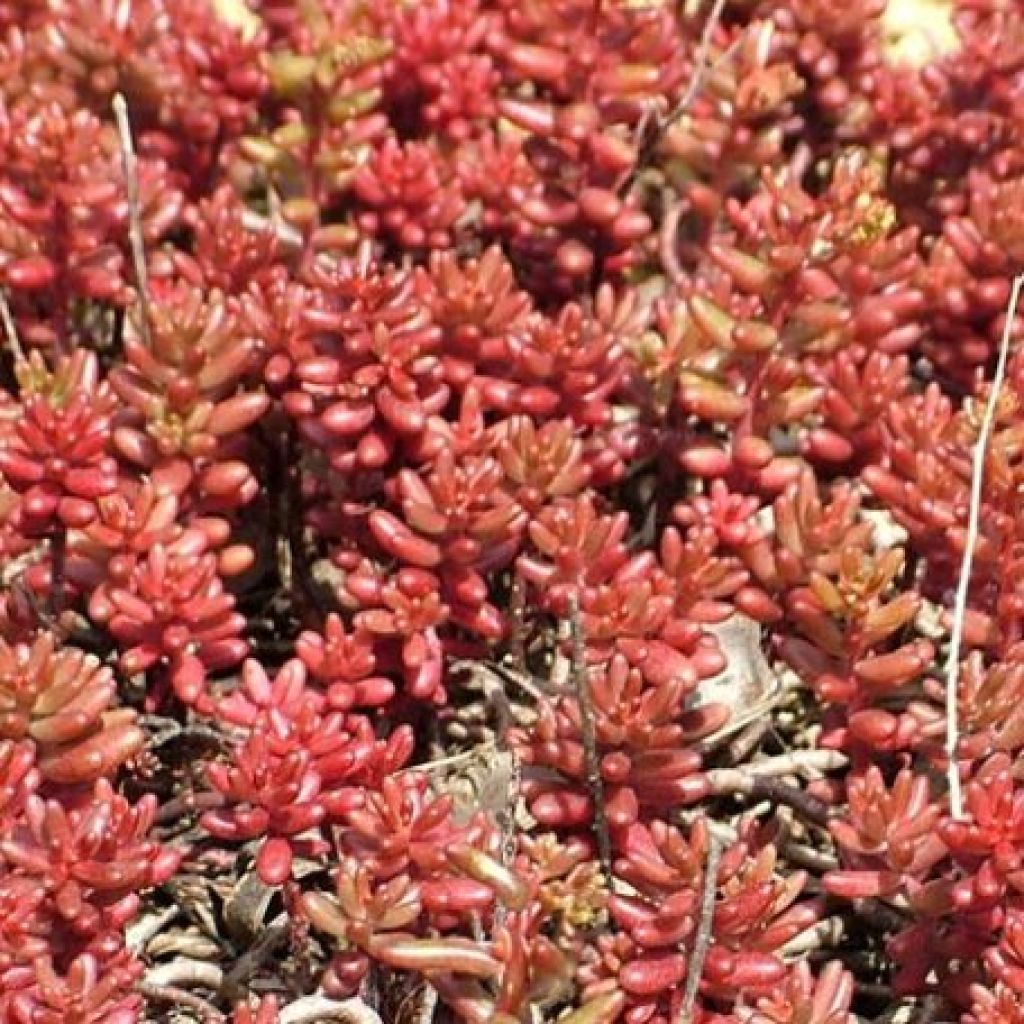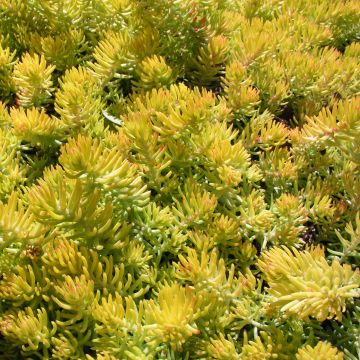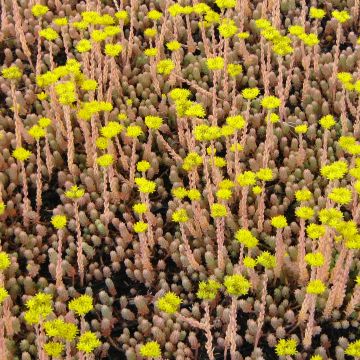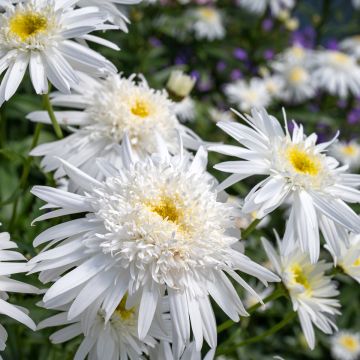

Sedum album var. murale - Stonecrop


Sedum album var. murale - Stonecrop


Sedum album var. murale - Stonecrop
Sedum album var. murale - Stonecrop
Sedum album var. murale
White Stonecrop, White Sedum
Very pretty plant in perfect condition.
françoise, 26/10/2024
Special offer!
Receive a €20 voucher for any order over €90 (excluding delivery costs, credit notes, and plastic-free options)!
1- Add your favorite plants to your cart.
2- Once you have reached €90, confirm your order (you can even choose the delivery date!).
3- As soon as your order is shipped, you will receive an email containing your voucher code, valid for 3 months (90 days).
Your voucher is unique and can only be used once, for any order with a minimum value of €20, excluding delivery costs.
Can be combined with other current offers, non-divisible and non-refundable.
Home or relay delivery (depending on size and destination)
Schedule delivery date,
and select date in basket
This plant carries a 12 months recovery warranty
More information
We guarantee the quality of our plants for a full growing cycle, and will replace at our expense any plant that fails to recover under normal climatic and planting conditions.
Would this plant suit my garden?
Set up your Plantfit profile →
Description
Sedum album 'Murale' is a particularly colourful white stonecrop. It is decorative all year round, but particularly sublime in the approach of winter when its foliage turns reddish-purple garnet. It is a ground cover perennial with small, rounded, tightly packed leaves that form a remarkable dense carpet that changes colour throughout the seasons. The carpet colonises the poorest and driest terrains through long stems that easily take root in crevices. A delicate summer flowering in white-pink shades completes this delicate miniature.
Sedum album 'Murale' belongs to the Crassulaceae family and is sometimes wrongly confused with the cultivar 'Coral Carpet', which is slightly less colourful. The classic form S. album, called white stonecrop, grows in poor, shallow, very dry, limestone soils. It is a perennial plant native to Europe (central and southern), Asia Minor (Turkey), and North Africa.
Sedum album 'Murale' can spread over more than 40cm (16in). Its trailing stems are slightly upright at their tips, reaching a height of barely 5cm (2in). They bear small oblong, fleshy, almost cylindrical leaves. When filled with water, they measure just 3 to 4mm. Alternating, they are arranged in such a way as to resemble small rosettes at the tips of the stems. This foliage displays changing shades. Initially light green, it gradually evolves into coral red, eventually turning very dark red or even violet towards the end of autumn. This colour gradually spreads to all the leaves. These nuances vary, as in most sedums, depending on climatic conditions: the amount of light and the cold will either lighten or intensify its colours. From this carpet stands out a tiny and delicate flowering, between June and August depending on the climate. The inflorescences are miniature corymbs, made up of multiple slightly pinkish star-shaped flowers, which can double the height of this little carpet.
Sedum album 'Murale' is ideal in rocky and poor soil that is arid in summer and almost impossible to vegetate. Perfectly hardy, it only fears the competition of taller plants, which generally prefer more favourable conditions. Its changing colours transform a barren rockery, a bank, the top of a wall, and even a green roof. Sedums are easy-to-care-for succulents, with flowers and foliage in various shades that should be taken advantage of to create colourful palettes, whether in borders, containers or rockeries. However, they should not be subjected to excessive moisture in winter, nor covered with dead leaves (as this can cause them to wither). They prefer a sunny exposure, even scorching, and will thrive in a few millimetres of substrate. Plant it with its cousins S. 'Lemon Ball', S. 'Lydium Glaucum', S. 'Cape Bianco' and S. 'Angelina' to create a multicoloured mosaic.
Report an error about the product description
Sedum album var. murale - Stonecrop in pictures


Flowering
Foliage
Plant habit
Botanical data
Sedum
album var. murale
Crassulaceae
White Stonecrop, White Sedum
Southern Europe
Other Sedum
View all →Planting and care
Sedum album 'Murale' enjoys warm exposures and dry, poor, and very well-drained soils. You can plant it in the ground or in a container in spring or autumn. Ensure the soil is well-drained and add some gravel if necessary. Conversely, if you place it in a rock garden or on a wall, just give it a little compost to help it to establish. Afterwards, it will take care of itself.
Take care of it by ensuring that it does not become covered with dead leaves or vegetation residues, and by removing any faded inflorescences if necessary.
Planting period
Intended location
Care
-
, onOrder confirmed
Reply from on Promesse de fleurs
Similar products
Haven't found what you were looking for?
Hardiness is the lowest winter temperature a plant can endure without suffering serious damage or even dying. However, hardiness is affected by location (a sheltered area, such as a patio), protection (winter cover) and soil type (hardiness is improved by well-drained soil).

Photo Sharing Terms & Conditions
In order to encourage gardeners to interact and share their experiences, Promesse de fleurs offers various media enabling content to be uploaded onto its Site - in particular via the ‘Photo sharing’ module.
The User agrees to refrain from:
- Posting any content that is illegal, prejudicial, insulting, racist, inciteful to hatred, revisionist, contrary to public decency, that infringes on privacy or on the privacy rights of third parties, in particular the publicity rights of persons and goods, intellectual property rights, or the right to privacy.
- Submitting content on behalf of a third party;
- Impersonate the identity of a third party and/or publish any personal information about a third party;
In general, the User undertakes to refrain from any unethical behaviour.
All Content (in particular text, comments, files, images, photos, videos, creative works, etc.), which may be subject to property or intellectual property rights, image or other private rights, shall remain the property of the User, subject to the limited rights granted by the terms of the licence granted by Promesse de fleurs as stated below. Users are at liberty to publish or not to publish such Content on the Site, notably via the ‘Photo Sharing’ facility, and accept that this Content shall be made public and freely accessible, notably on the Internet.
Users further acknowledge, undertake to have ,and guarantee that they hold all necessary rights and permissions to publish such material on the Site, in particular with regard to the legislation in force pertaining to any privacy, property, intellectual property, image, or contractual rights, or rights of any other nature. By publishing such Content on the Site, Users acknowledge accepting full liability as publishers of the Content within the meaning of the law, and grant Promesse de fleurs, free of charge, an inclusive, worldwide licence for the said Content for the entire duration of its publication, including all reproduction, representation, up/downloading, displaying, performing, transmission, and storage rights.
Users also grant permission for their name to be linked to the Content and accept that this link may not always be made available.
By engaging in posting material, Users consent to their Content becoming automatically accessible on the Internet, in particular on other sites and/or blogs and/or web pages of the Promesse de fleurs site, including in particular social pages and the Promesse de fleurs catalogue.
Users may secure the removal of entrusted content free of charge by issuing a simple request via our contact form.
The flowering period indicated on our website applies to countries and regions located in USDA zone 8 (France, the United Kingdom, Ireland, the Netherlands, etc.)
It will vary according to where you live:
- In zones 9 to 10 (Italy, Spain, Greece, etc.), flowering will occur about 2 to 4 weeks earlier.
- In zones 6 to 7 (Germany, Poland, Slovenia, and lower mountainous regions), flowering will be delayed by 2 to 3 weeks.
- In zone 5 (Central Europe, Scandinavia), blooming will be delayed by 3 to 5 weeks.
In temperate climates, pruning of spring-flowering shrubs (forsythia, spireas, etc.) should be done just after flowering.
Pruning of summer-flowering shrubs (Indian Lilac, Perovskia, etc.) can be done in winter or spring.
In cold regions as well as with frost-sensitive plants, avoid pruning too early when severe frosts may still occur.
The planting period indicated on our website applies to countries and regions located in USDA zone 8 (France, United Kingdom, Ireland, Netherlands).
It will vary according to where you live:
- In Mediterranean zones (Marseille, Madrid, Milan, etc.), autumn and winter are the best planting periods.
- In continental zones (Strasbourg, Munich, Vienna, etc.), delay planting by 2 to 3 weeks in spring and bring it forward by 2 to 4 weeks in autumn.
- In mountainous regions (the Alps, Pyrenees, Carpathians, etc.), it is best to plant in late spring (May-June) or late summer (August-September).
The harvesting period indicated on our website applies to countries and regions in USDA zone 8 (France, England, Ireland, the Netherlands).
In colder areas (Scandinavia, Poland, Austria...) fruit and vegetable harvests are likely to be delayed by 3-4 weeks.
In warmer areas (Italy, Spain, Greece, etc.), harvesting will probably take place earlier, depending on weather conditions.
The sowing periods indicated on our website apply to countries and regions within USDA Zone 8 (France, UK, Ireland, Netherlands).
In colder areas (Scandinavia, Poland, Austria...), delay any outdoor sowing by 3-4 weeks, or sow under glass.
In warmer climes (Italy, Spain, Greece, etc.), bring outdoor sowing forward by a few weeks.



















































